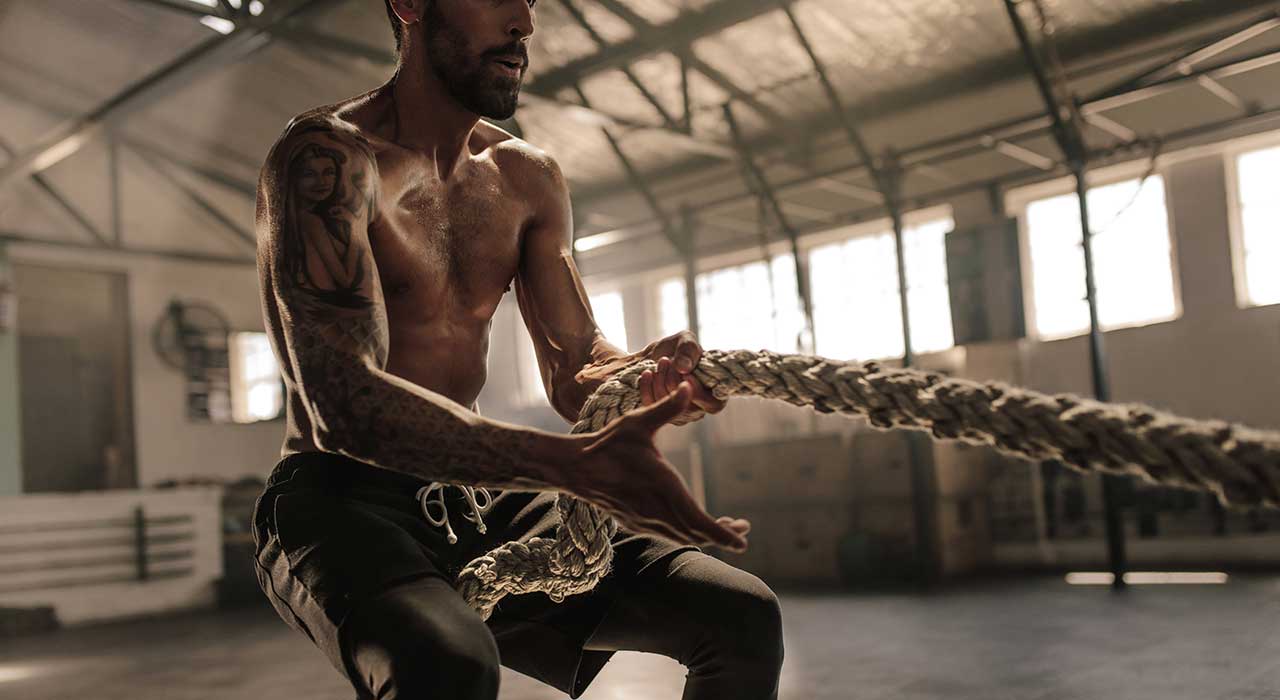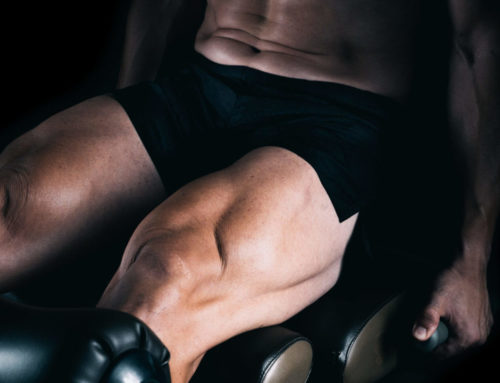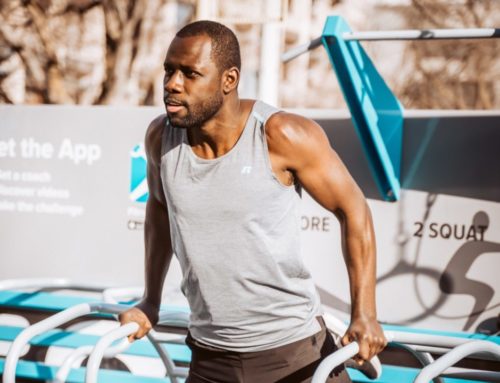There are a handful of key exercises that can slow the aging process and put you on track for a longer, more enjoyable life. Here’s how to master them so that your body is in it for the long haul.
Want the fountain of youth? Yep, you and the other 106 billion people who’ve ever walked on this earth. Whether it was secret berries, miracle diets, surgery or Aunt Ethel’s secret homemade concoction – nothing has worked, bar one elixir. How can you delay the inevitable and improve your quality of life? The answer is simple: smart nutrition and strong muscles. Here’s why you need to change your way of thinking about exercise and how you can use this information to get better at every age.
A Body That Moves
You’re told to slow down once you reach retirement age. This is when your basal metabolic rate eases back, blood pressure rises, aerobic capacity declines and your max heart rate plummets along with your bone density. These are the so-called biomarkers of aging that everyone must endure. Fortunately, studies by Tufts University have shown that the decline of these biomarkers is far from inevitable. In fact, much of it can be reversed. If you start with muscle, the average American begins to lose 6.6 pounds of it with each decade after young adulthood and the rate of loss accelerates, particularly after the half-century mark. It is now known that not only can you maintain muscle strength into old age but muscle hypertrophy (gains) can happen at almost any age. Men in their seventies can increase their strength by upwards of 400% in just three months, found the latest research. This creates a domino effect because after that kind of transformation, you’ll only want to exercise even more.
Molecular Mechanisms
Aging might seem like a mystery, but science is beginning to unravel it slowly.Research at the de Duve Institute and the Ludwig Institute for Cancer Research found the human genome is packed into 46 chromosomes in each cell’s nucleus. The ends of all these chromosomes, called telomeres, are identical in every human being. These structures are the essence of life because they determine when a cell stops dividing. Over a person’s lifetime the telomeres get shorter and shorter due to successive cell divisions and when they get too short, your cells age. Cells that can maintain their telomeres are immortal and doing physical exercise helps to maintain telomere health. So, to stay young, you must keep your cells young – it’s that simple.
Too many cycles dividing repeatedly accelerates the aging process until eventually cells die out and stop dividing all together. A paper at the University of Louvain, found a compound called NRF1 protects telomeres from getting shorter (older) and exercise boosts your levels of this age eraser. “Think of NRF1 like varnish on nails” explains Anabelle Decottignies, the study co-author. “You cannot change the nail, but you can change the varnish again and again.” What you’re doing when you’re exercising is refreshing and replacing the old sections of your cells with new protective molecules. This is the secret to preventing diabetes, improving heart health and living a life made of quality movements. Whether that’s playing with the kids, smashing a new record or being your team’s MVP – you’ll create a life worth living.
Exercise Your Plan
It doesn’t matter your age or gender, these five key body movements should be part of every fitness regimen and done daily if at all possible – even on your rest days as part of an active recovery. Fortunately, they can all be done just about anywhere. All you need is the ground and some resistance. These movements will improve your balance, stability, endurance, strength, and posture. The study and facts tell you to push it, your telomeres will know the difference so don’t cheat yourself.
What To Do
Perform exercise 1 and 2 back-to-back over three sets that should take 6.5 minutes. Next, do exercises 3 and 4 for 6.5 minutes and do exercise five for 6.5 minutes.
THE SQUAT
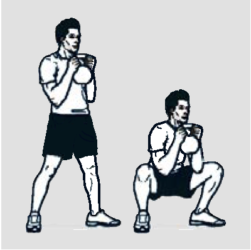
Exercises options: Goblet squat, barbell squats, trap bar dead lift, jump squat, or Bulgarian split squat
Muscles: quadriceps, hamstrings, gluteals, erector spinae
Why: The squat is a compound movement that uses multiple groups to improve balance and stability. You’ll create strong and flexible hips to sit and stand while also building your core. It also targets your glutes and quadriceps muscles, which will build a solid base foundation for all body movements.
THE LUNGE
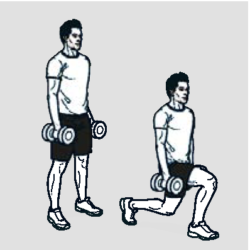
Exercises options: Jumping leg lunges, dumbbell or kettlebell lunges, or reverse lunge.
Muscles: quadriceps, hamstrings, gluteals
Why: Like squats, lunges are compound movements that increase functional strength, balance, stability, core, and posture.
THE PRESS
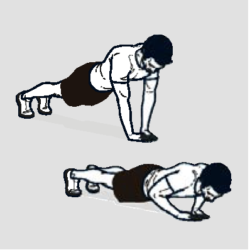
Exercises options: push-ups, dips, standing press, floor press laying on your back, or clean and press
Muscles: pectoralis major, deltoids, triceps, transversus abdominals, erector spinae
Why: Push-ups develop postural support and upper-body strength to aid in your daily life as you push and reach.
PULL OR ROW
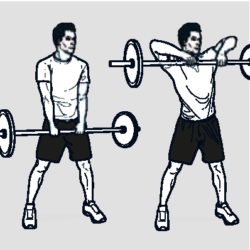
Exercises options: Bent-over row single or dual arm, single-arm row
Muscles: erector spinae, latissimus dorsi, biceps, deltoids
Why: Rows develop postural support and improve upper body strength in your back and shoulders to help you perform pulling or carrying movements.
ROTATION
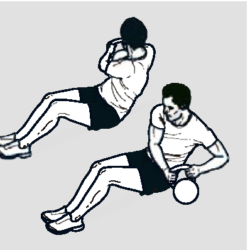
Exercises options: standing medicine ball throw, Russian twist
Muscles: external and internal obliques, rectus abdominals,
Why: Think of your core muscles as the sturdy central link connecting your upper and lower body. Whether you’re swinging a golf club, hitting a baseball or mopping the floors, these motions originate in your core. No matter where the motion starts, it ripples upward and downwards connecting the chain, thus if your core is weak it will affect movements in your legs and arms.
MOVEMENT MAXIMIZATION
Use Challenging Resistance
Challenge your muscles. If you can complete 15 repetitions easily, then the weight is too light. But if you can’t perform an exercise through its full range of motion, and find yourself cheating on form, then it’s too heavy.
The correct weight will feel challenging by the end but won’t force you to sacrifice form.
Change Up Your Attack
Most people do the same exercises each time they train. Maybe you’ve been doing the same exercise routine – if it isn’t broken then don’t fix it, right? Here, make sure you vary things on a day-to-day basis but if you must repeat set formats over a longer period then never use the same routine for more than four weeks.
Value Your Warm-Up
Most people consider warm-up time to be wasted time. What they don’t realize is that a good warm-up will allow you to perform at a higher intensity. A good warm-up increases your muscle temperature, which increases blood flow, muscle contraction and reduces muscle resistance. Your warm-up should last 5-10 minutes.
Use Proper Form
The two biggest reasons for improper form are failing to concentrate on the exercise or trying to lift a weight that is too heavy. Lifting with improper form almost always results in injury. Take the time to achieve proper form because by doing so you’ll avoid injury and will reap the full benefit from each exercise.
Tempo Must Be Modified
Time under tension is the key to building muscle, don’t worry so much about the number of reps, concentrate on the eccentric move and you’ll improve your 1RM if that is your goal.
EXPERT: Tommy Tank is a Milwaukee-based nutrition consultant, Fitness Gym owner/trainer specializing in total body kettlebell workouts (tommytanklaf.com)


